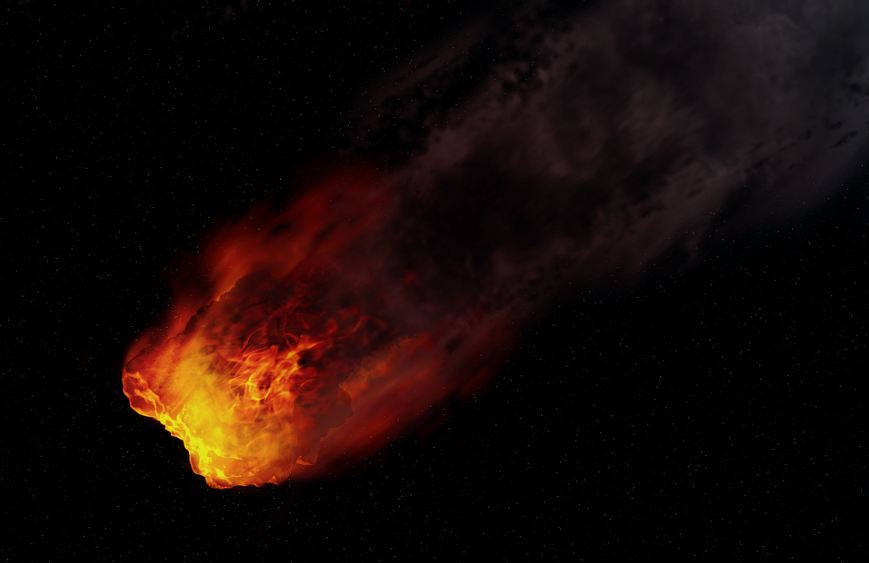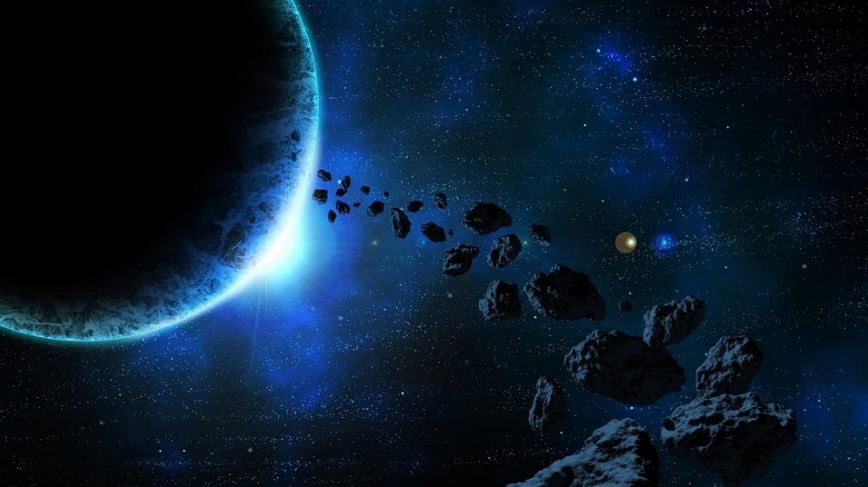The Milky Way galaxy and the entire Universe have billions and trillions of celestial objects, some are identified, and some are yet unknown to humans. With the help of Science and the love of astronomical studies of some researchers and scientists, we have unfolded the existing objects millions of light-years away in our knowledge.
There are trillions of rogue objects orbiting the Sun, some are too small to be qualified as planets, so they are assigned as comets, asteroids, and meteoroids. When we were in primary and in secondary school, we probably knew what exactly their differences were.
But over time, we tend to forget and confuse one with another. To recall, let us determine what makes one unique from the other regarding its composition, appearance, and performance.
Let’s start with a brief definition of each.
Asteroids
Rocky and airless leftovers from the formation of planets in our solar system, asteroids are mostly orbiting the Sun in the asteroid belt between Mars and Jupiter. They are larger than the pebble-sized objects we call meteoroids. Its sizes range from the size of cars to dwarf planets.
The three major types of asteroids, according to NASA.
Dark C (Carbonaceous) or C-type Asteroids
This comprises most asteroids forming around 75% of all known asteroids in the solar system and outer belts. They’re believed to be among the most ancient celestial objects in our solar system and close to the Sun’s composition, with little hydrogen or helium or other “volatile” elements.
Bright S (Silicaceous) or S-type Asteroids
These are in the inner belt that approximately 17% of asteroids are of this type. They tend to be metallic iron with some silicates of iron and magnesium.
Bright M (Metallic) or M-type Asteroids
This type is situated in the middle of the asteroid belt and is mainly metallic iron. Most asteroids belonging to this class are made from nickel-iron, either pure or mixed with small amounts of stone. Most M-type asteroids are moderately bright, having an albedo between 0.1 and 0.2
Asteroids Have Moons
We know that moons orbit planets, but asteroids also have smaller bodies orbiting them. Dactyl was the first known moon, which was discovered in 1993 to be orbiting asteroid Ida. Moons exist in more than 150 asteroids, with more being discovered periodically.
Asteroid 2004 BL86 was found to have an orbiting moon that was the most recently discovered and passed 750,000 miles (1.2 million kilometers) from Earth in early 2015.
Where Do Asteroids Come From?
They’re cosmic trash left behind from the formation of the solar system. Asteroids are named after the Greek word asteroeids, which means “starry” or “starlike” (to clarify, asteroids orbit stars and resemble tiny planets).
There are currently around a million asteroids recognized in our solar system. The asteroid belt contains the majority of the asteroids we know about.
What About the Comets?
Comets are dirty space solar system bodies of mostly ice and dust formed during the solar system’s birth 4.6 billion years ago. When it passes close to the Sun, it warms and releases gases in a process called outgassing. The vaporized ice and dust resemble a tail of a comet.
Comets usually have stable orbits in the solar system’s outer reaches, past the planet Neptune. The frozen comet is as big as a small town, and when it moves around and gets closer to the Sun, it heats up and pours out dust and gases into a giant glowing head bigger than most planets.
Halley’s comet is the most famous comet, with an orbit visible from Earth every 76 years. Named after a British astronomer, Edmond Halley, this comet has been observed since at least 240 B.C.
There are over 3,000 currently known comets, but scientists believe that billions of them are out there. Some of the most significant are Comet Hale-Bopp, discovered in 1995, and Comet Hyakutake, discovered in 1996.
Where Do Comets Come From?
The majority of comets come from beyond or on the outskirts of the solar system. Many come from the far-flung areas of the Oort Cloud and the Kuiper Belt, where there are countless of them. Some go about the Sun, while others leave the solar system.
Those who orbit the Sun do so at regular intervals, making some of them well-known visitors. Many comets have far longer orbit periods than Halley’s, but some have shorter ones, such as Encke’s comet, which orbits once per 3.3 years (you can see it in October 2023).
What Are Meteors?
Meanwhile, meteoroids are tiny asteroids or parts of the broken comets or particles of the planets. When a meteoroid enters the Earth’s surface or atmosphere at a wildly flashing speed, it becomes a meteor because it burns up due to intense friction. When it glows and fires up, we see them as shooting stars or call meteors.
But sometimes, they don’t vaporize in the atmosphere, and when they survive as they enter the atmosphere and hit the ground, they are called a meteorite. Most meteors occur in the mesosphere, about 50-80 kilometers above the Earth’s surface.
Meteor derives from the Greek meteron, meaning “a thing in the air,” and used in English from at least the 1570s. This word comes from the root aeirein, which means “to lift.” The root of the other meteor-derived nouns is the same.
Meteors were believed to have existed since ancient times and have caused Dinosaurs’ extinction as an 8-mile-long meteor hit the Earth, causing a cloud of dust that lowered the climate. However, it was discovered in 1833 to come from the Solar System.
You can watch a meteor shower in the sky using a pair of binoculars or a beginner telescope every year. The Perseids shower happens in August and the Geminids in December.
Where Do Meteors Come From?
Remember that meteors are meteoroids that penetrate the atmosphere of the Earth. Many meteoroids are remnants of comets or asteroids, particularly those in the asteroid belt between Jupiter and Mars (some items are pulled out of the belt by Jupiter’s enormous gravity field and sent wandering across space, occasionally toward Earth).
Some meteoroids are chunks of planets or other heavenly bodies that broke off after an asteroid collided with them, such as Mars or the Moon.




